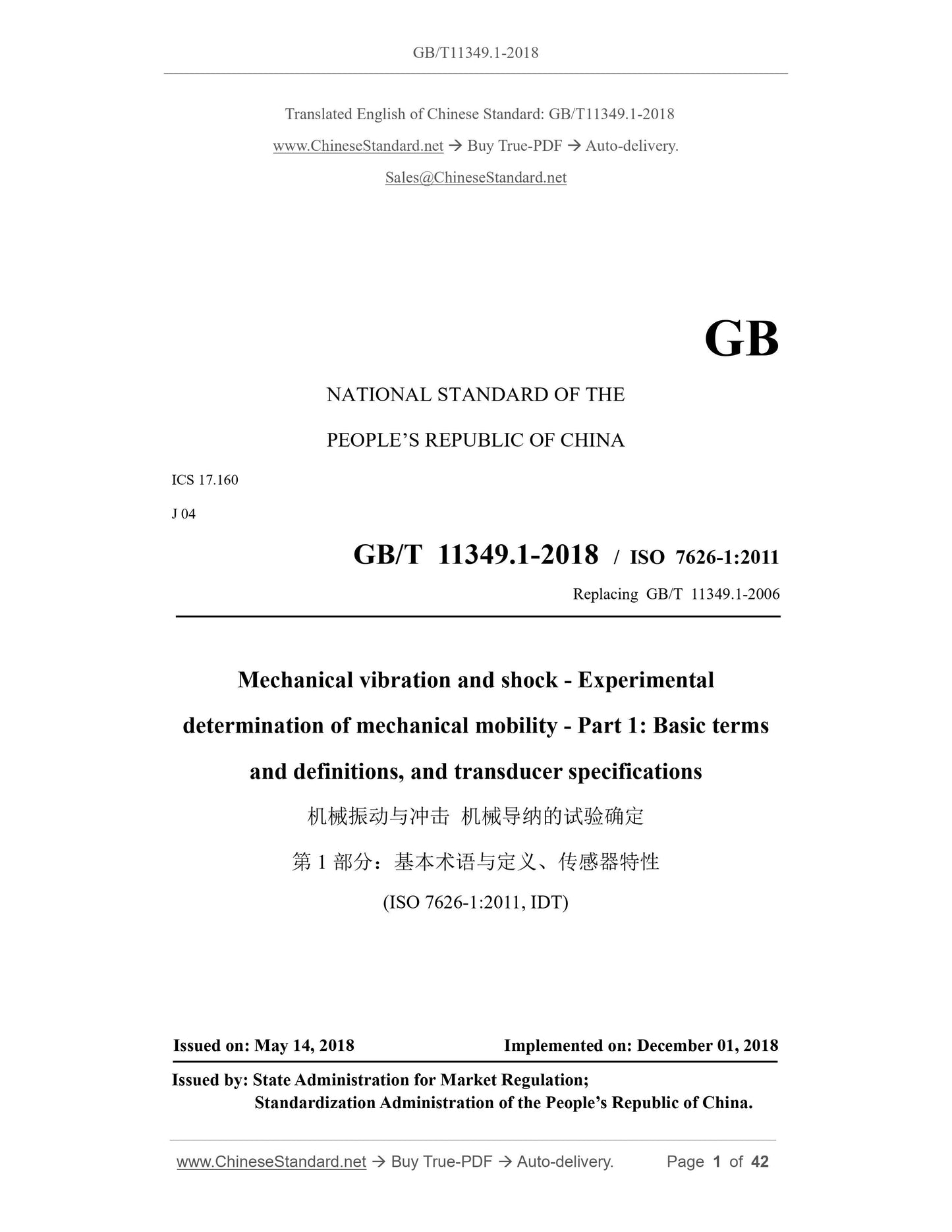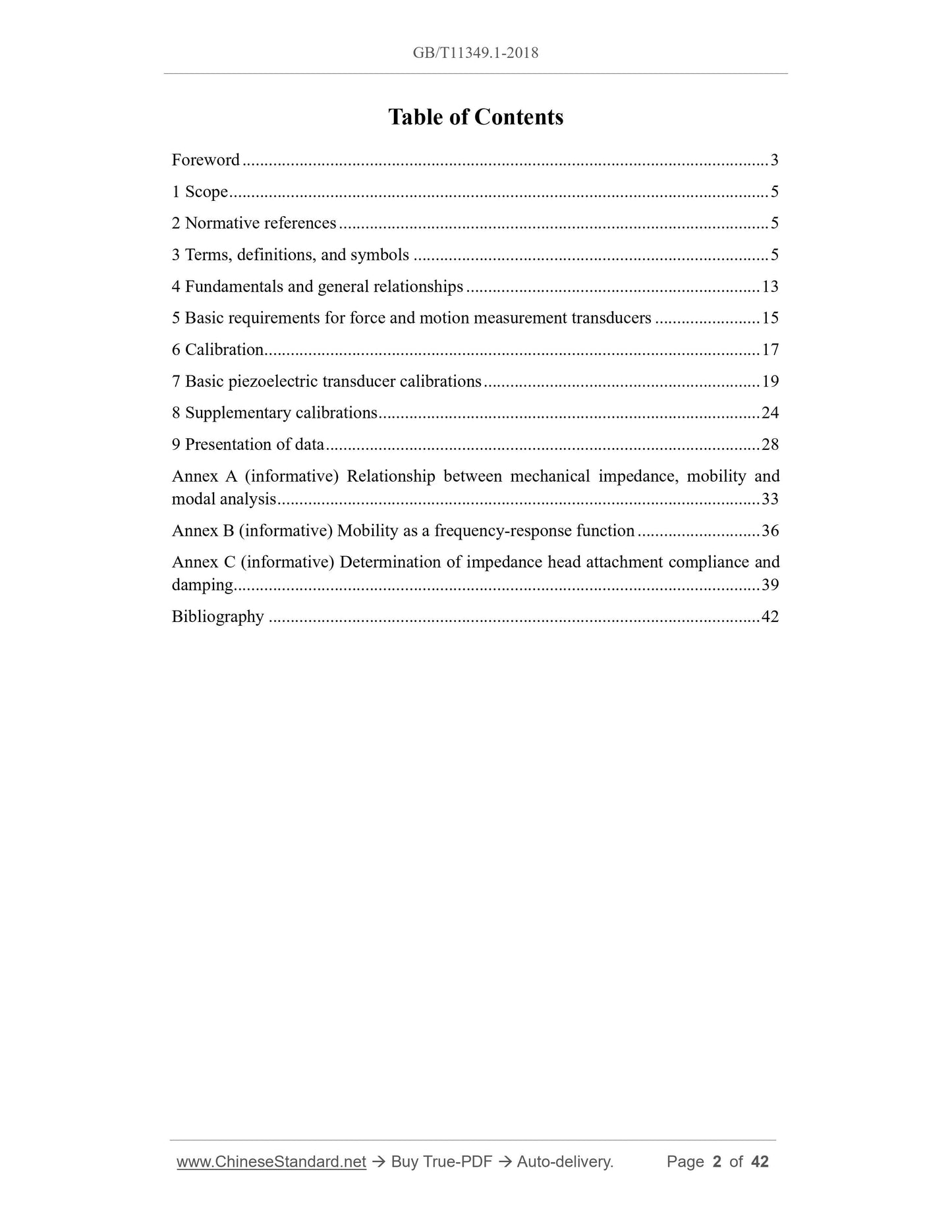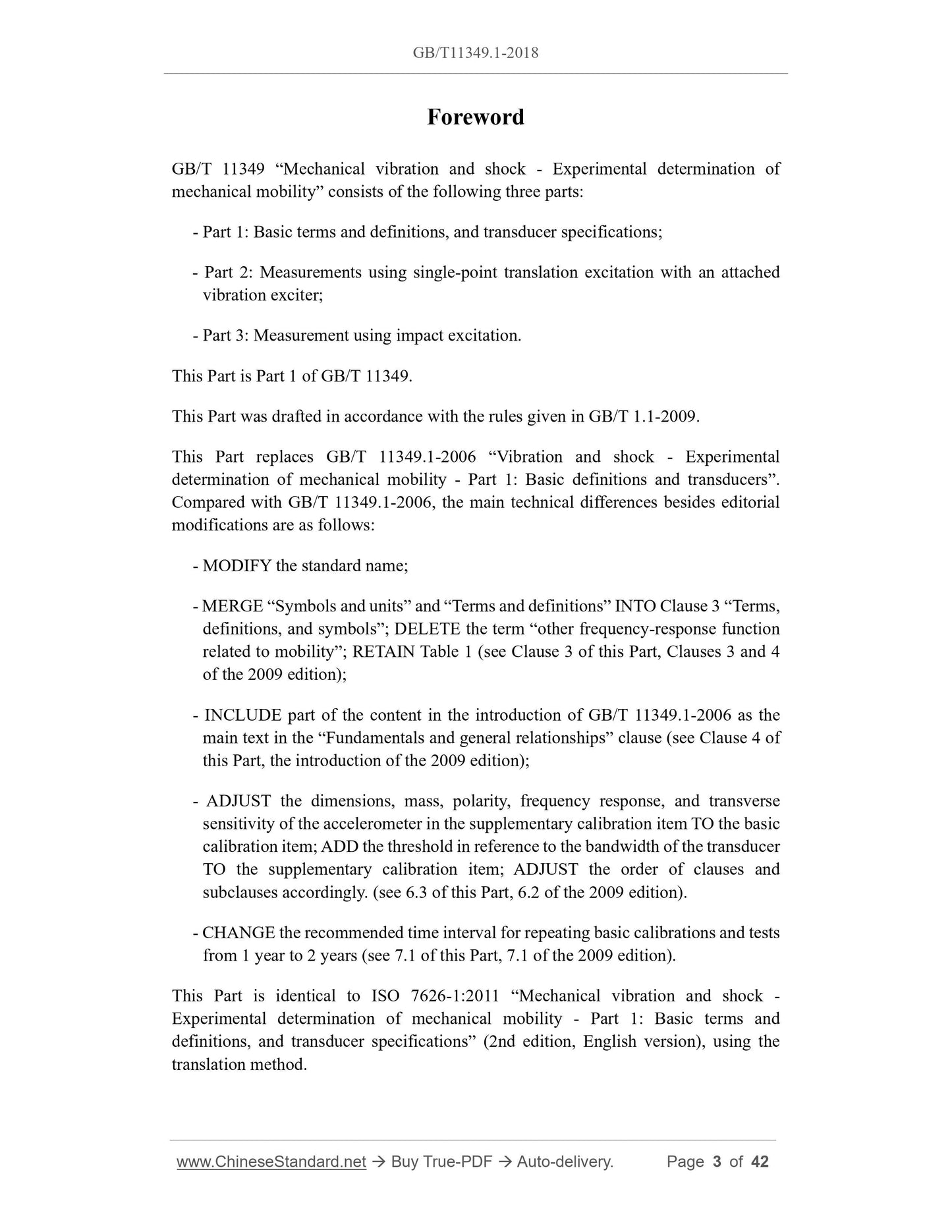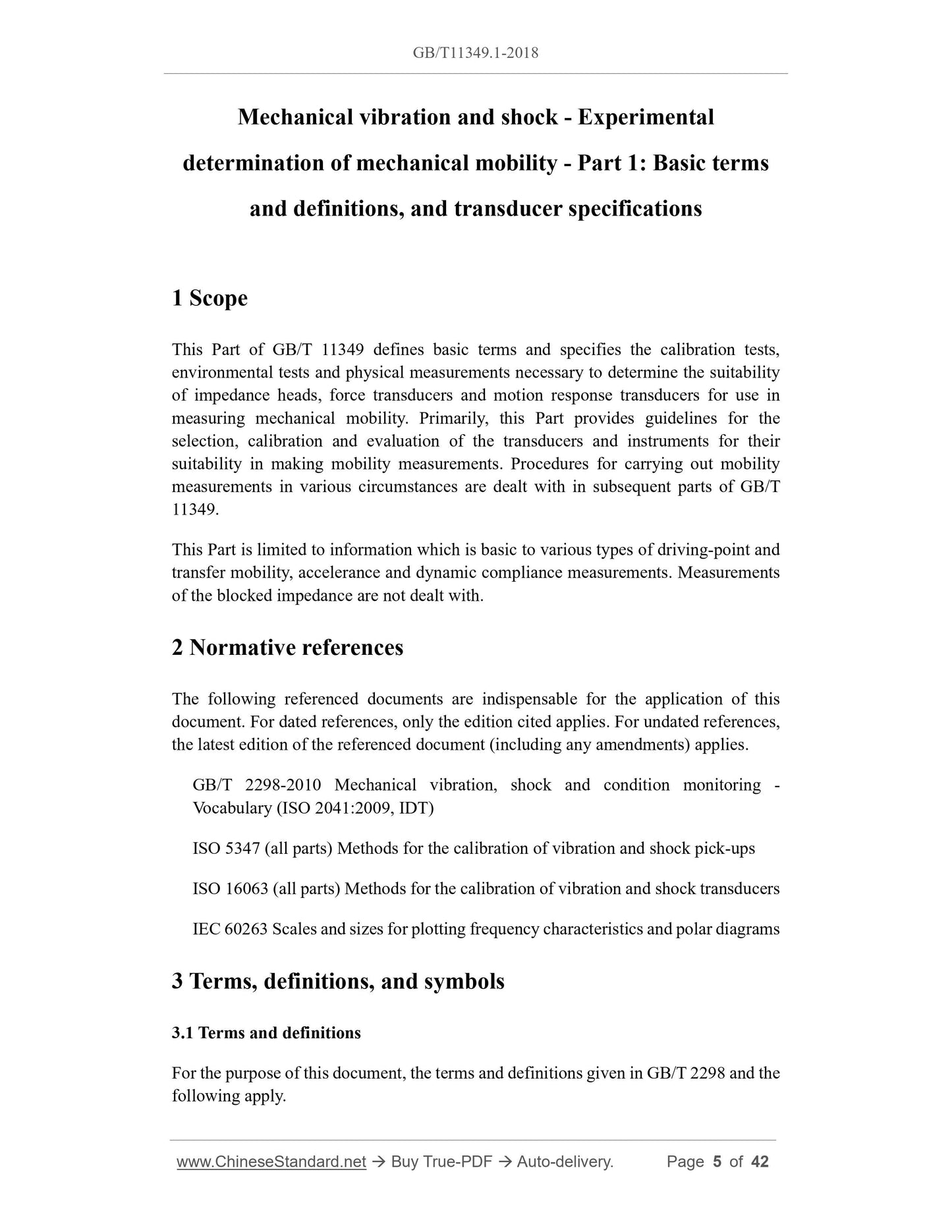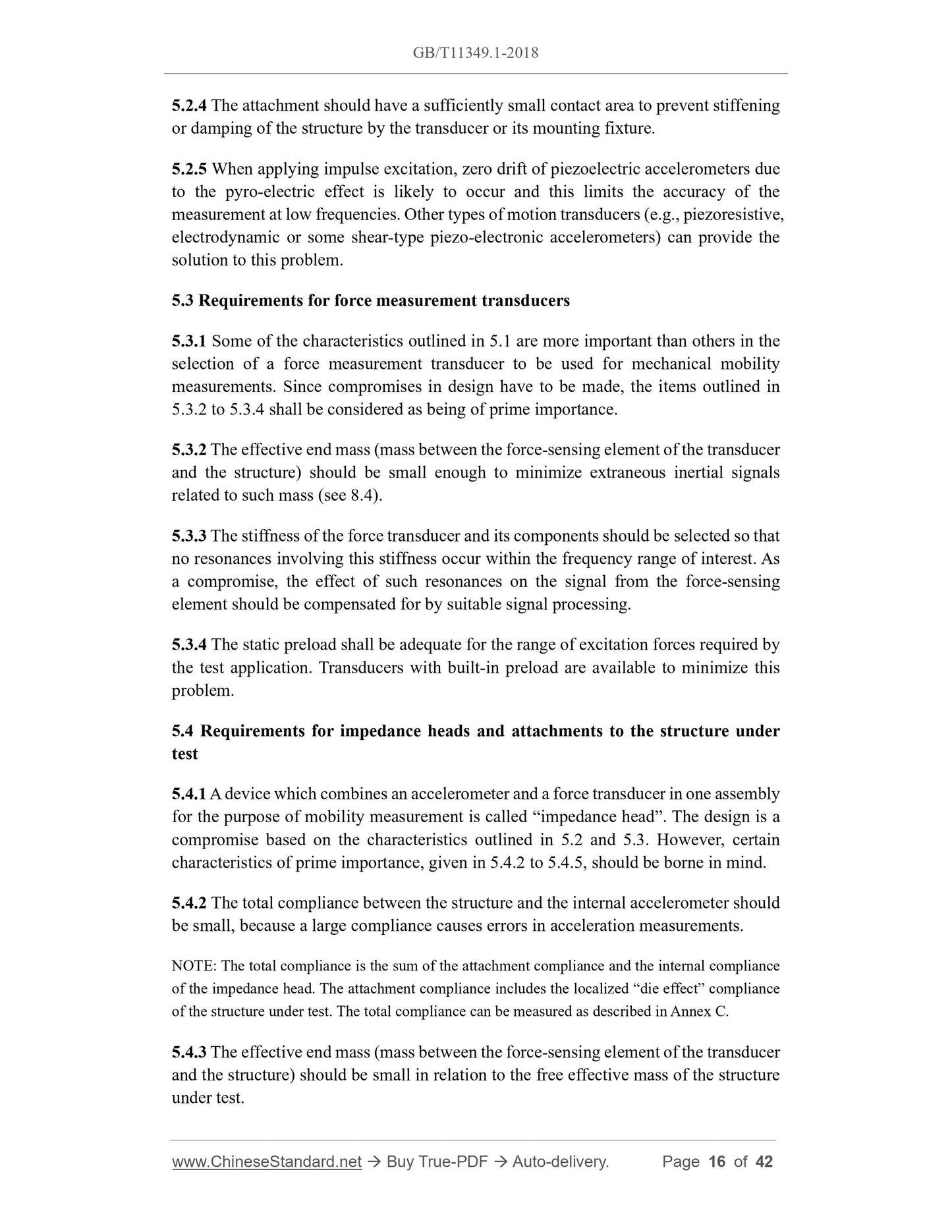1
/
of
5
www.ChineseStandard.us -- Field Test Asia Pte. Ltd.
GB/T 11349.1-2018 English PDF (GB/T11349.1-2018)
GB/T 11349.1-2018 English PDF (GB/T11349.1-2018)
Regular price
$460.00
Regular price
Sale price
$460.00
Unit price
/
per
Shipping calculated at checkout.
Couldn't load pickup availability
GB/T 11349.1-2018: Mechanical vibration and shock -- Experimental determination of mechanical mobility -- Part 1: Basic terms and definitions, and transducer specifications
Delivery: 9 seconds. Download (and Email) true-PDF + Invoice.Get Quotation: Click GB/T 11349.1-2018 (Self-service in 1-minute)
Newer / historical versions: GB/T 11349.1-2018
Preview True-PDF
Scope
This Part of GB/T 11349 defines basic terms and specifies the calibration tests,environmental tests and physical measurements necessary to determine the suitability
of impedance heads, force transducers and motion response transducers for use in
measuring mechanical mobility. Primarily, this Part provides guidelines for the
selection, calibration and evaluation of the transducers and instruments for their
suitability in making mobility measurements. Procedures for carrying out mobility
measurements in various circumstances are dealt with in subsequent parts of GB/T
11349.
This Part is limited to information which is basic to various types of driving-point and
transfer mobility, accelerance and dynamic compliance measurements. Measurements
of the blocked impedance are not dealt with.
Basic Data
| Standard ID | GB/T 11349.1-2018 (GB/T11349.1-2018) |
| Description (Translated English) | Mechanical vibration and shock -- Experimental determination of mechanical mobility -- Part 1: Basic terms and definitions, and transducer specifications |
| Sector / Industry | National Standard (Recommended) |
| Classification of Chinese Standard | J04 |
| Classification of International Standard | 17.160 |
| Word Count Estimation | 31,320 |
| Date of Issue | 2018-05-14 |
| Date of Implementation | 2018-12-01 |
| Older Standard (superseded by this standard) | GB/T 11349.1-2006 |
| Regulation (derived from) | National Standards Announcement No. 6 of 2018 |
| Issuing agency(ies) | State Administration for Market Regulation, China National Standardization Administration |
Share
